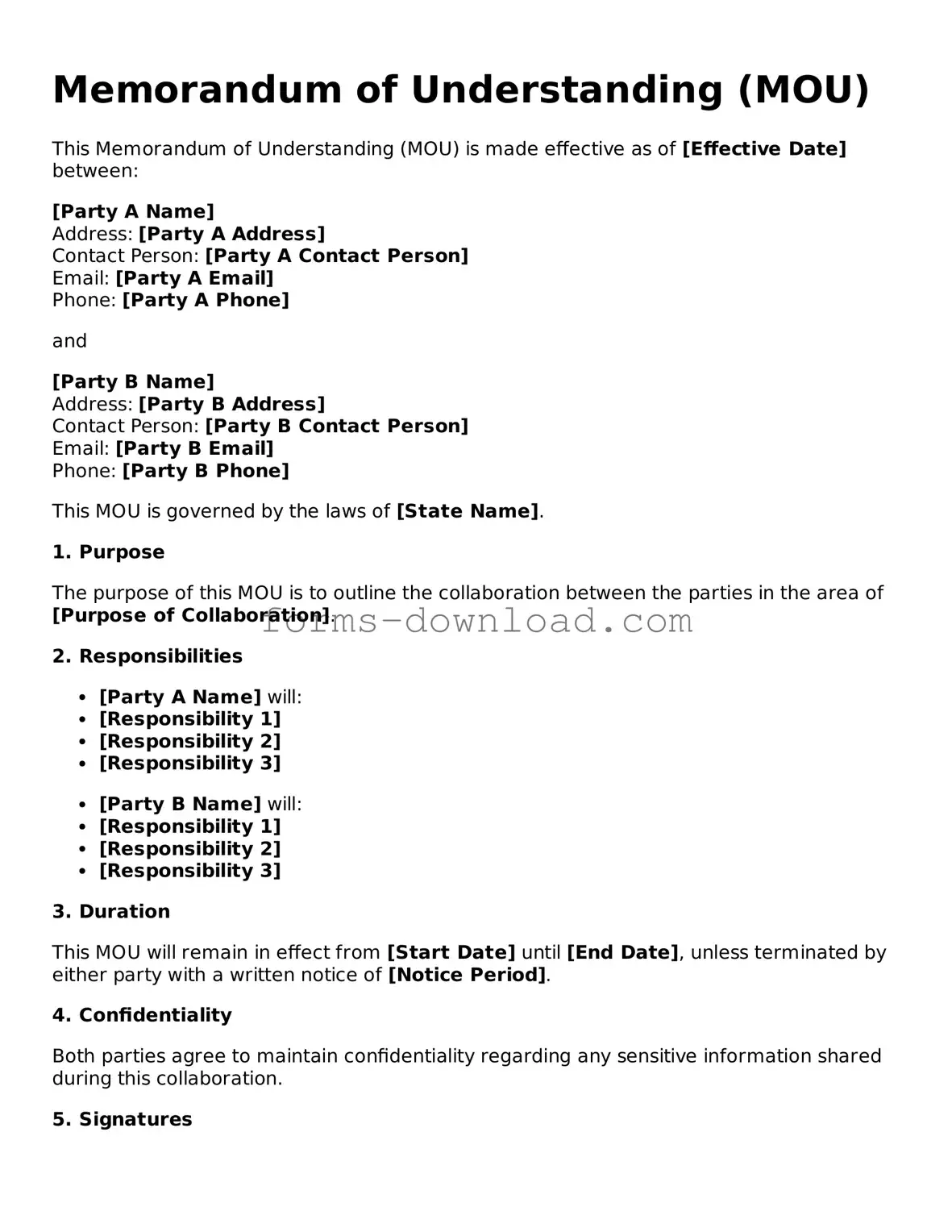Memorandum of Understanding (MOU)
This Memorandum of Understanding (MOU) is made effective as of [Effective Date] between:
[Party A Name]
Address: [Party A Address]
Contact Person: [Party A Contact Person]
Email: [Party A Email]
Phone: [Party A Phone]
and
[Party B Name]
Address: [Party B Address]
Contact Person: [Party B Contact Person]
Email: [Party B Email]
Phone: [Party B Phone]
This MOU is governed by the laws of [State Name].
1. Purpose
The purpose of this MOU is to outline the collaboration between the parties in the area of [Purpose of Collaboration].
2. Responsibilities
- [Party A Name] will:
- [Responsibility 1]
- [Responsibility 2]
- [Responsibility 3]
- [Party B Name] will:
- [Responsibility 1]
- [Responsibility 2]
- [Responsibility 3]
3. Duration
This MOU will remain in effect from [Start Date] until [End Date], unless terminated by either party with a written notice of [Notice Period].
4. Confidentiality
Both parties agree to maintain confidentiality regarding any sensitive information shared during this collaboration.
5. Signatures
By signing below, the parties acknowledge their agreement to the terms outlined in this MOU.
[Party A Name]
Signature: _________________________
Date: _____________________________
[Party B Name]
Signature: _________________________
Date: _____________________________
